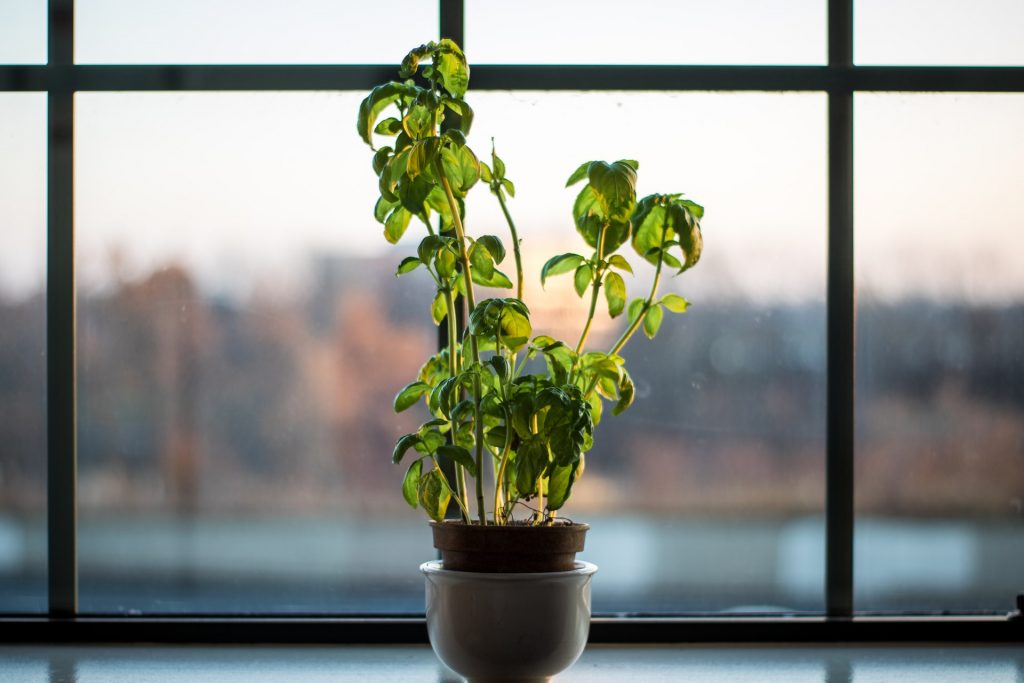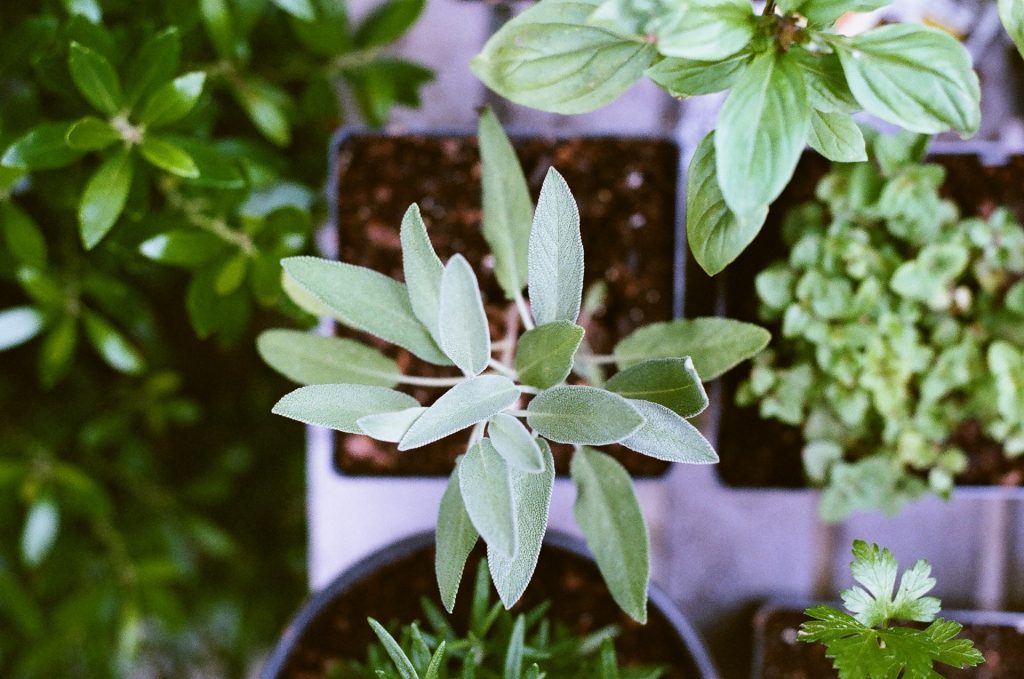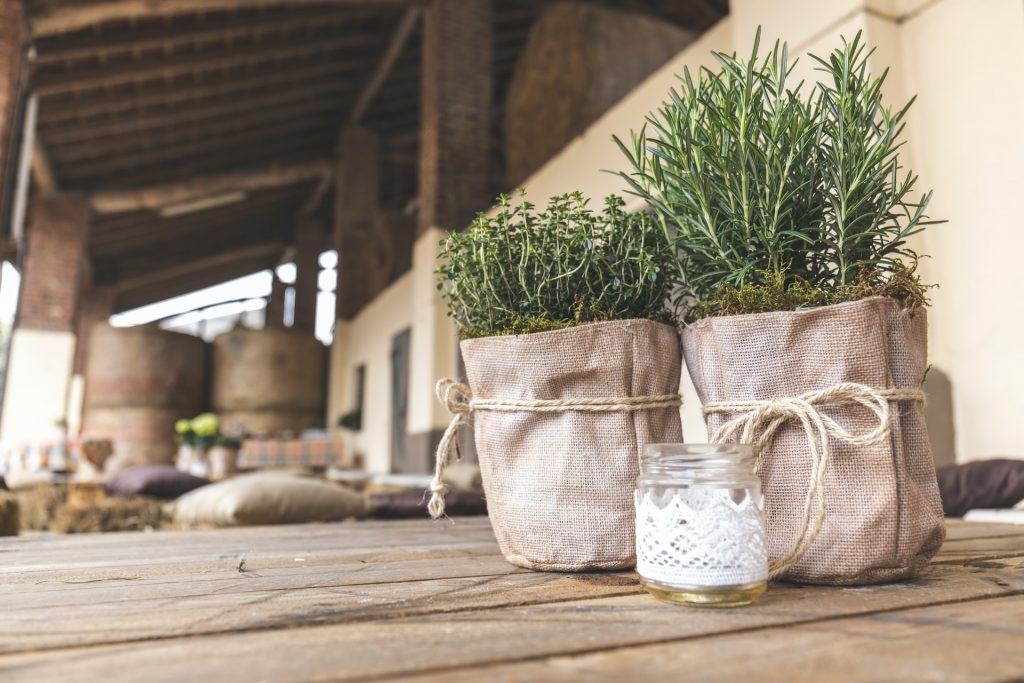
If you want to have fresh herbs at your disposal all year long, the best thing to do is to grow them indoors. From mint to basil, the herbs listed in this article can quickly turn nearly everything you prepare into a gourmet meal.
When you grow these herbs in your kitchen, they will always be within your reach, and you’ll know that they are fresh and free of pesticides. Besides, they add a bit of greenery to your kitchen, making it more lively and prettier to look at while saving you some money.
When picking a place to grow your herbs, keep in mind that they need a good four to six hours of sun per day, so either carefully choose a spot for them or plant them in an AeroGarden.
When planning your kitchen garden, don’t think only of herbs, you know. Instead, take a chance on something else, like chili peppers. You never know what new tastes you might discover.
Parsley
Many consider parsley to be just a green garnish for food, but it helps things like stews achieve a more balanced flavor. It is a mildly bitter herb that can enhance the flavor of various meals.
As an added benefit, parsley can aid in digestion and is a good source of Vitamins A and C . Parsley is often grown as an annual, but it will stay evergreen all winter in milder climates. Its plants will grow to be large and bushy.
Mint
Mint comes in several different varieties. You can use it in drinks like mojitos or mint juleps. You can also add some mint to your summer iced tea. Mint freshens the breath and will help to calm your stomach.
However, be aware that mint is a highly invasive plant. If you don’t keep it under control, it will spread and take over your kitchen garden. Because of that, it’s best to have it grown in a separate container.
Basil

A critical herb for cuisines worldwide and a favorite pairing with tomatoes and on pizza, basil is easy to grow indoors.
It loves heat and bright light, so give it a northern or eastern window. Avoid cold, drafty spots, especially in the winter.
Basil is not a long-term houseplant, so you should plant a new batch of seeds every few months. You can expect to keep and use it for several weeks until the stems start to grow woody.
Chives
Chives grow best in bright light, such as a south-facing window. Start with a purchased plant and pot it in rich, organic soil.
The spiky, onion flavored leaves of chives will add a mild kick to eggs, soups, and salads and also make for a pretty garnish.
Sage

Sage is an aromatic herb that is great for seasoning meats, sauces, and vegetables. Use it sparingly because sage will tend to overpower other flavors.
It also helps to relieve cuts, inflammation and helps with memory issues. It was once thought to be a miracle cure for many problems.
Sage is an easy herb to grow and is relatively easy to care for. If you want to attract bees to your yard, plant some outdoors.
Oregano
Oregano is a member of the mint family, so treat it like you would ordinary mint. The dried leaves are more intense than fresh.
Add it to tomato sauces, meat, casseroles, soups, and stews to get that flavor essential for Italian, Mexican, Central American, and Middle Eastern cuisines.
Water your oregano when the soil’s surface is dry, but don’t let it dry out. Give the plants moderate to intense light.
Thyme
Thyme is a delicate looking plant. Its tiny leaves and trailing stems give it natural houseplant appeal, too. Pot thyme in fast-draining soil and place it in a warm spot such as a sunny windowsill. Water when the surface of the ground is dry, but don’t let it wilt.
It is often used for flavoring egg, bean, and vegetable dishes, as well as in the Mediterranean, Italian, and Provençal French cuisines. Use it in soups and stews, or pair it with lamb, poultry, and tomatoes.
Rosemary

Around Christmastime, you are likely to see tree-shaped rosemary bushes for sale. You can bring them home and keep them for planting in the spring. Its needled leaves are among the must-add herbs to chicken, pork, lamb, soups, potatoes, and olive oil. It’s also delicious in tomato and cream sauces. Due to its delightful scent, rosemary is sometimes even used in floral arrangements.
Rosemary tolerates hot, sunny, dry locations in the summer months but prefers cooler temperatures in the winter, as long as the light is intense enough. It likes its soil a bit on the dry side, so be careful not to overwater. When allowed to flourish, a rosemary plant will grow into a full-sized bush.
Cilantro
Also known as coriander leaf or Chinese parsley, cilantro is a perfect addition to spicy foods like chillis, and many other Mexican, Chinese, Southeast Asian, and Indian dishes.
The seeds of cilantro are known as coriander. The plant grows early in the season and doesn’t like it when the ground becomes too warm.
Chamomile
Throughout Europe and in the States, chamomile is most often used as an ingredient in herbal tea. It has also been used for thousands of years as a traditional medicine for settling stomachs and calming the nerves. Chamomile also helps reduce inflammation and treat fevers.
There are two different species that you can grow – German or Roman chamomile. German chamomile is an annual plant that grows up to three feet tall, so it might not be the best fit for your kitchen. Roman chamomile is a perennial that only grows to about a foot high. They are both equally good when it comes to making tea.
Peppermint
Peppermint is a hybrid mint, created by mixing water mint and spearmint. It is very good for your health, as besides aiding digestion and freshening the breath, it is also a good source of calcium, potassium, and Vitamin B. Its oils can even help relieve the effects of irritable bowel syndrome.
Peppermint prefers rich soil and partial shade. Like other mints, it spreads quickly, so consider planting it in containers.
Kevin has gone through an extensive home renovation with his son, which he has both
thoroughly enjoyed, and dreaded every morning. He is now the proud owner of half his dream house (the other half has been waiting for spring). You can read more of Kevin’s work on PlainHelp.
